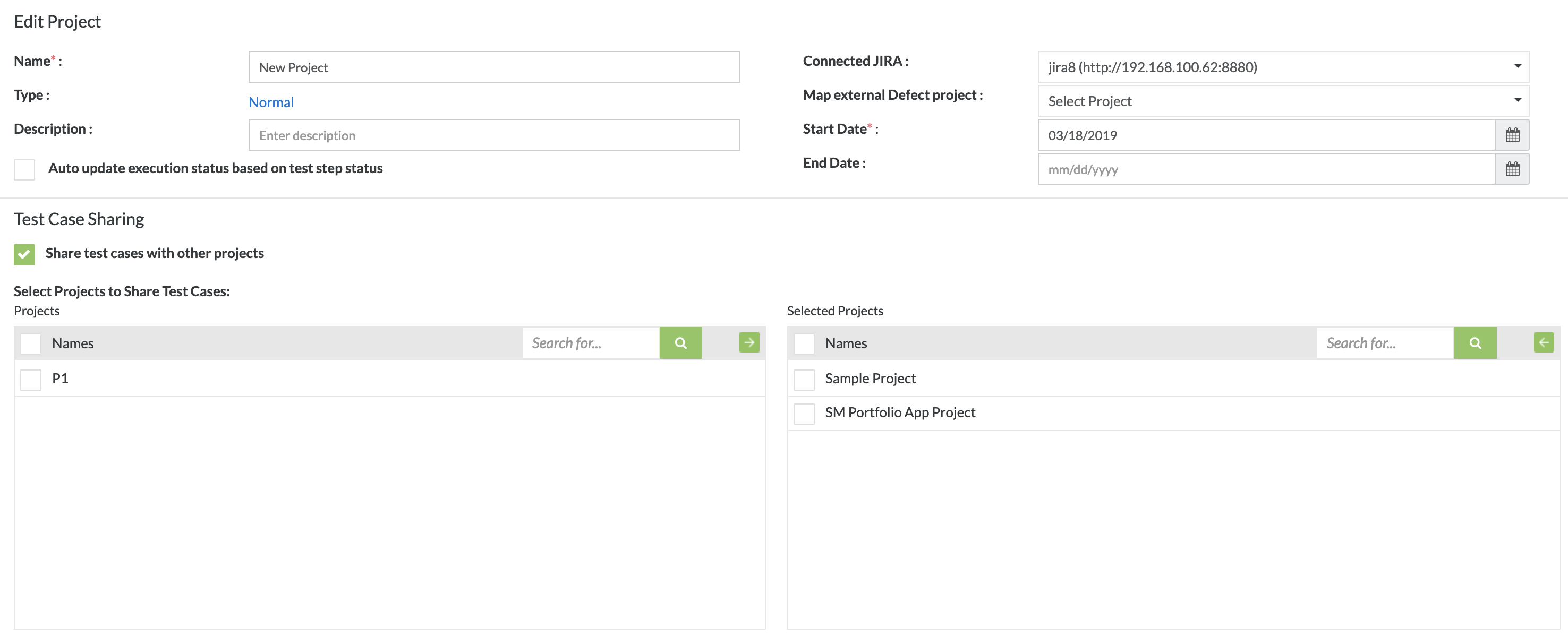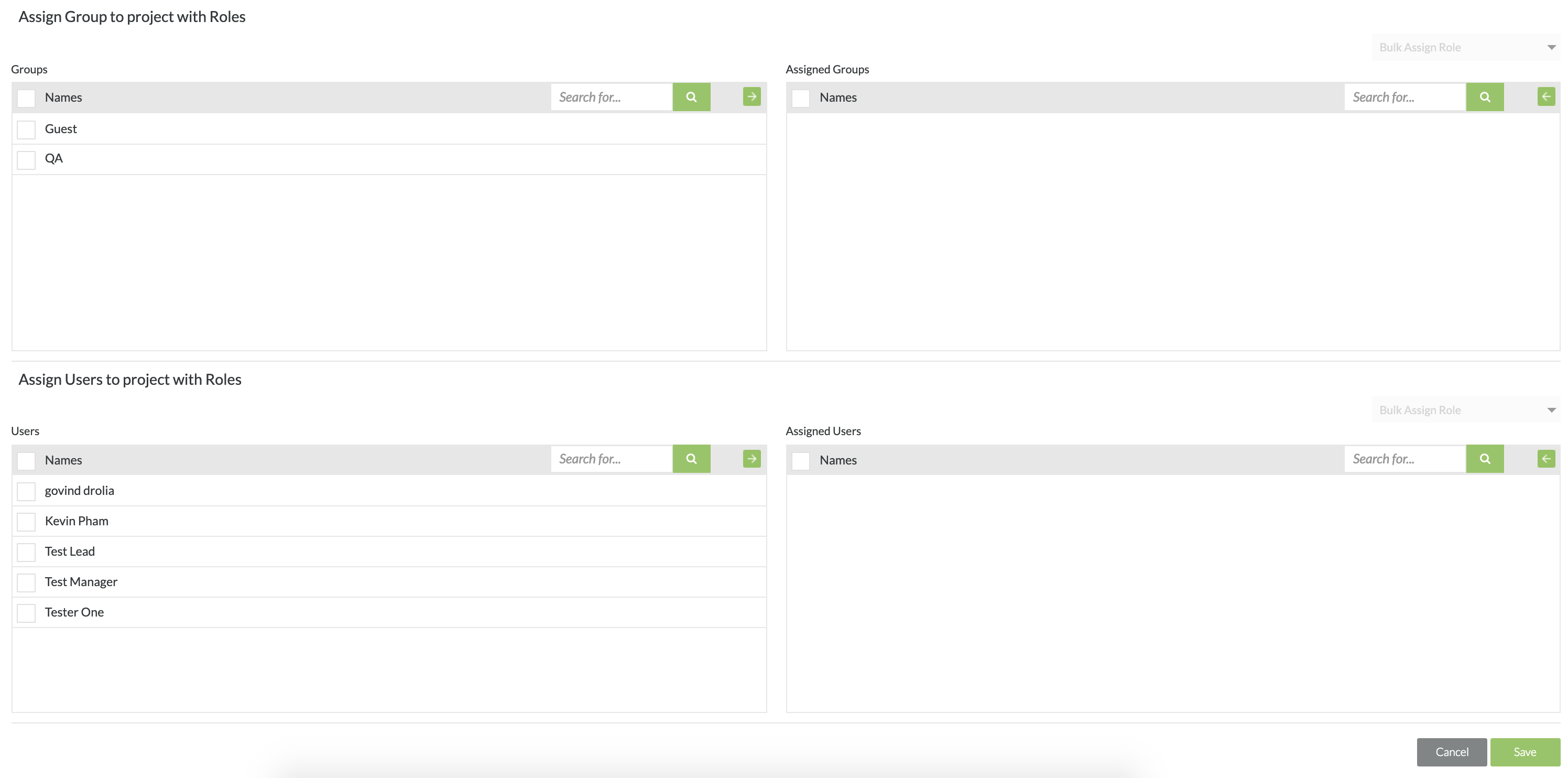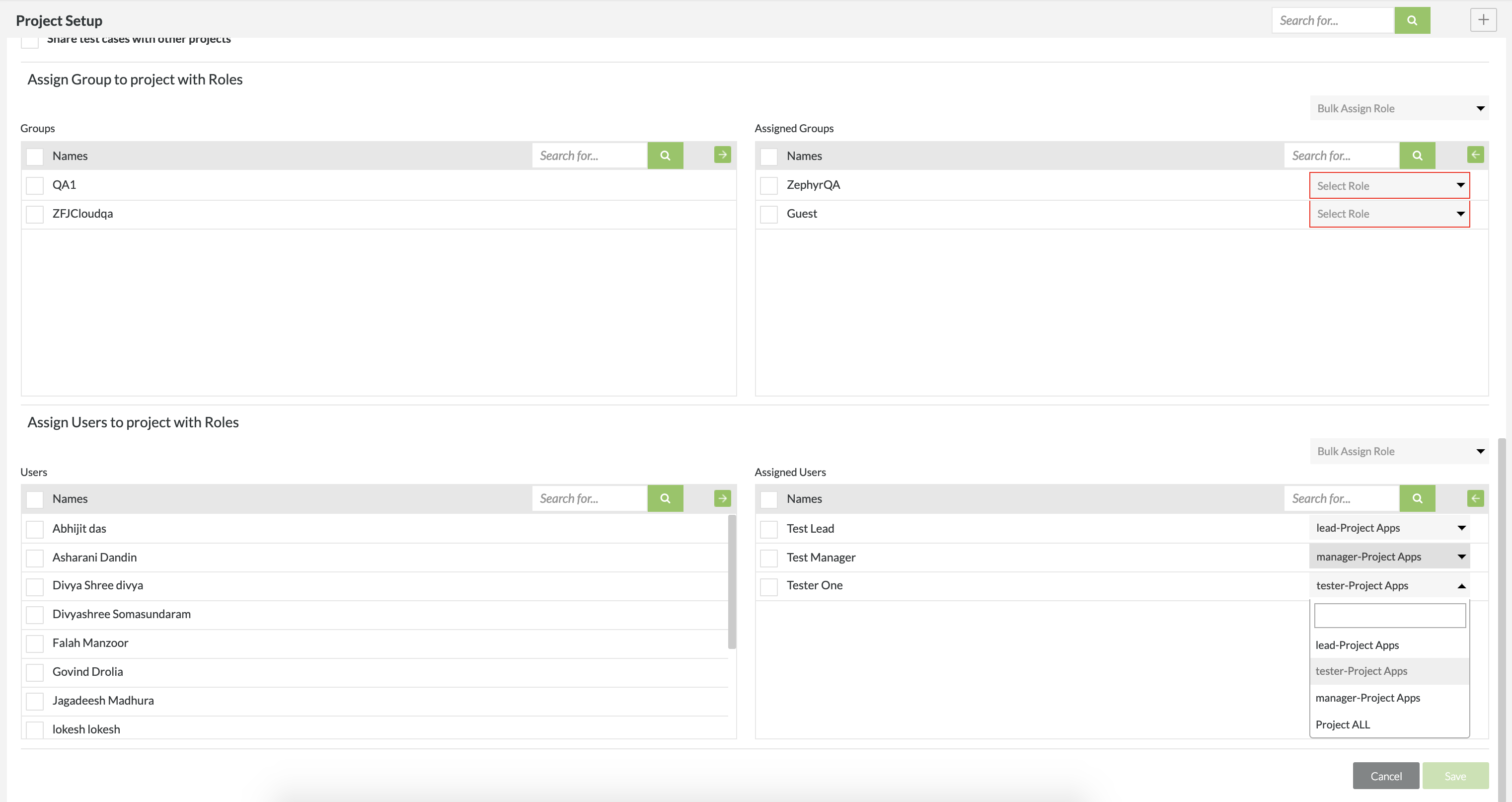Editing a Project
Editing Projects
1. Click on the individual project that you want to edit.
2. Change/Edit any the existing fields for the project. The project must have the mandatory fields filled out. The mandatory fields are shown with a red star next to the text and the text box border is red.
- Name - The unique name given to a project to distinguish a project. This date is important as all subsequent activities and dates are set past this point.
- Start Date - The initial date that the project is started
There are optional fields to fill out such as a description for the project, selecting an end date, mapping the project to an external defect project from JIRA, selecting a lead to be on the project as well as an option to change the project type.
There are a total of 3 different project types.
Normal (N) Projects - Default project type. Users assigned to a normal project are able to view the testing assets of all other normal projects including the Global Trees of the test repository and test execution. Users that are only assigned to a normal project cannot view the testing assets of restricted and isolated projects.
Restricted (R) Projects - Users assigned to a restricted project are not able to view the testing assets of isolated projects but can see those assets in a normal project. Restricted projects are typically useful for restricting access to sensitive data that only members of the project can see.
Isolated (I) Projects - Users assigned to an isolated project are not able to view the testing assets of any projects nor can anybody see the testing assets of their project. Isolated projects are typically useful to completely isolate a project and its testing assets. For example, it might be ideal to whenever you want to host multiple customer projects on the same instance of Zephyr.
Share test cases with other projects: A project can be marked as shared which will give its' test resources the ability to be copied to other projects marked as shared. Project sharing is restricted to projects with type "Normal".
3. Select the projects that you want to share test cases with.
- Check off the project(s) that you want to share test cases with.
- Click on the green arrow to move the checked off project(s) to the selected shared projects
4. Assign groups to a project to allow users in the group(s) to have permission and access to the project.
- Check off the group(s) that you want to include on the project.
- Click on the green arrow to move the checked off group(s) to the project.
When assigning groups to a project, you can select the role for the group to have for the project. This is utilized to select project specific roles for groups of users that are assigned to a project. Selecting a role is mandatory when assigning groups to a project. You can assign multiple groups to a project with a single role.
- Only project specific and dashboard roles will be shown.
This is a beneficial to allow the user that is setting up the project to customize the role at the project level for the group of users. This is done so that the group that is assigned to a project cannot perform the same actions for other projects. The customized roles can be created in the Customizations page under System Setup and the groups can be created in the Group Setup page.
5. Assign users to a project to allow those users to have permission and access to the project.
- Check off the user(s) that you want to include on the project.
- Click on the green arrow to move the checked off user(s) to the project.
When assigning users to a project, you can select the role for the user. This is utilized to select project specific roles for users that are assigned to a project. Selecting a role is mandatory when assigning users to a project. You can assign multiple users to a project with a single role.
- Only project specific and dashboard roles will be shown.
This is a beneficial to allow the user that is setting up the project to customize the role at the project level for users. This is done so that users that are assigned to a project cannot perform the same actions in other projects. The customized roles can be created in the Customizations page under System Setup.
When assigning roles to both groups and users, Zephyr provides the ability to bulk assign roles.
6. After making the final edits/changes, click on the "Save" Button to finalize the changes for the project in the system.



